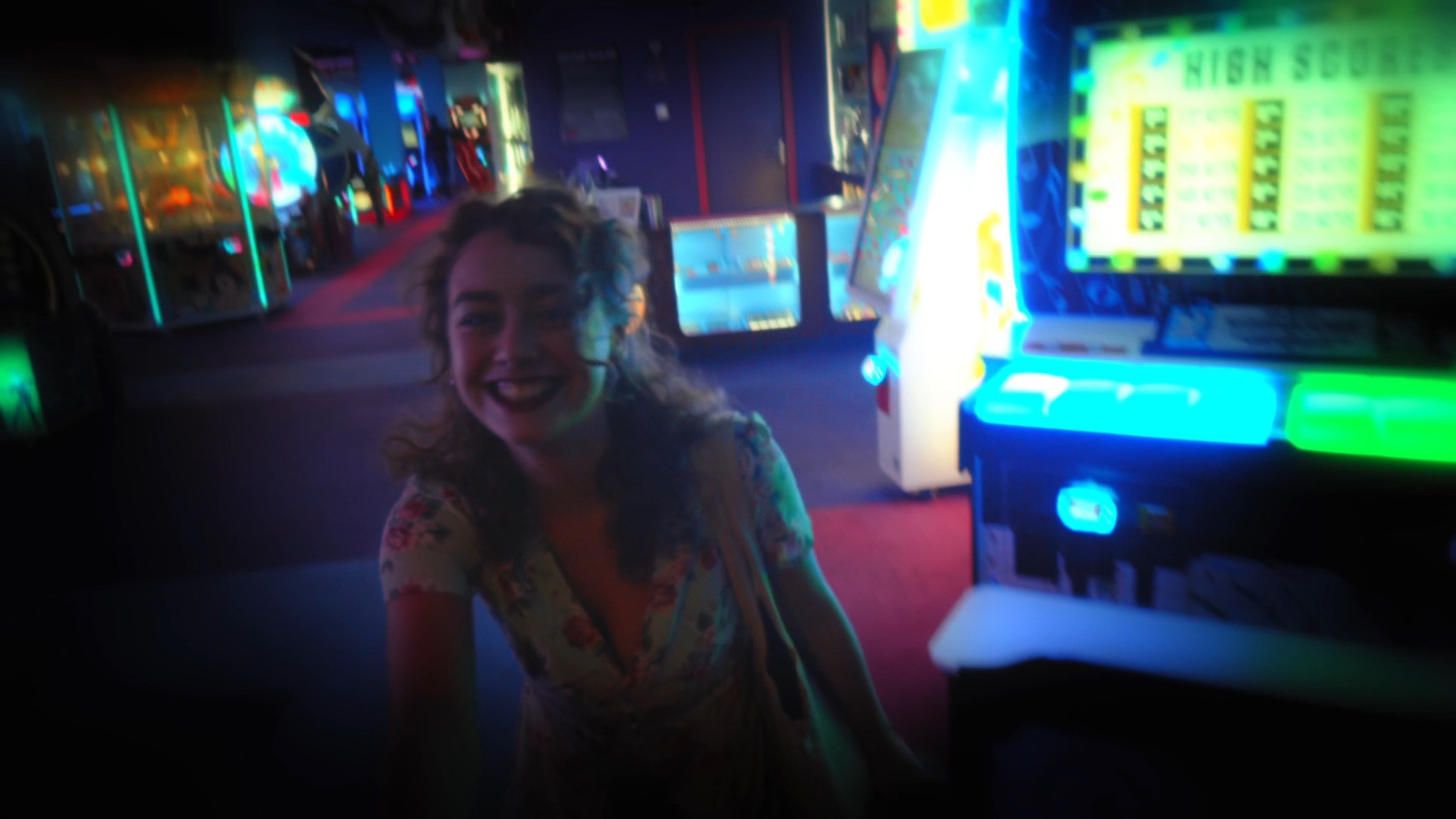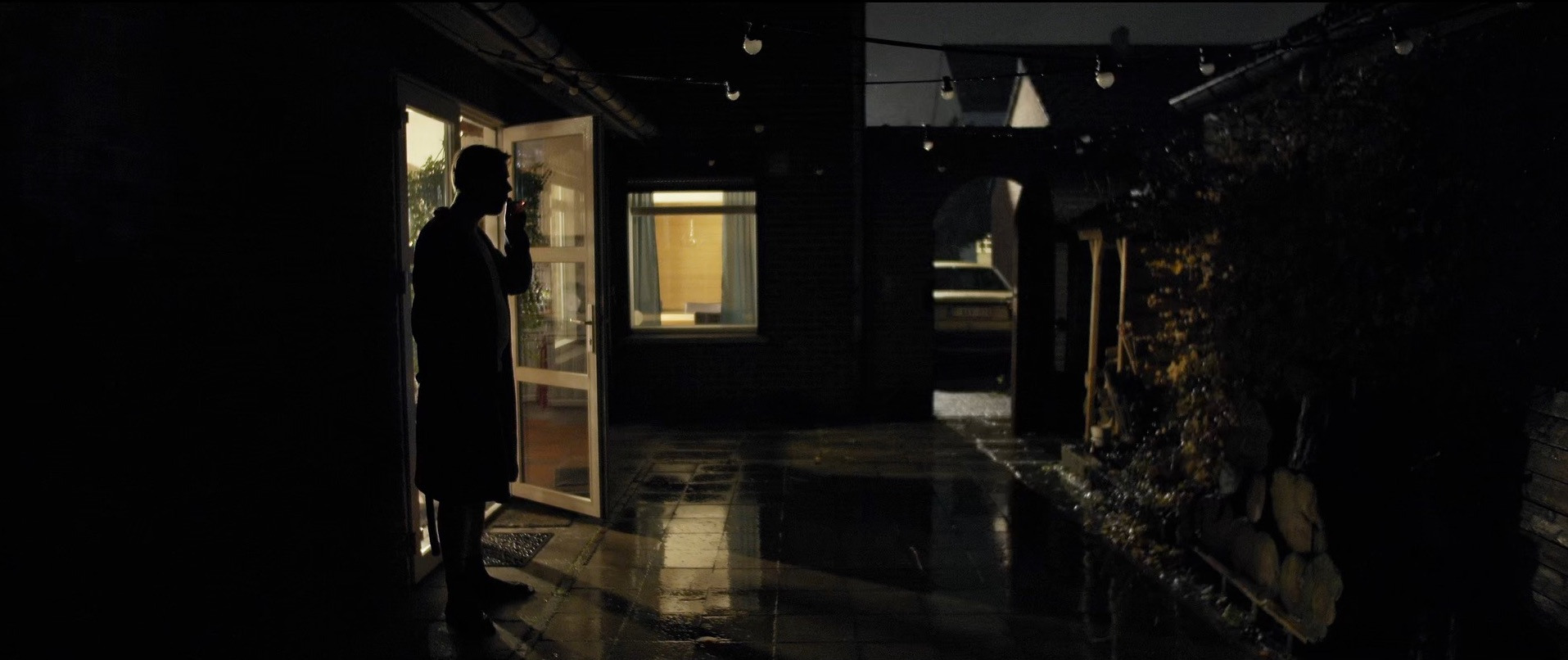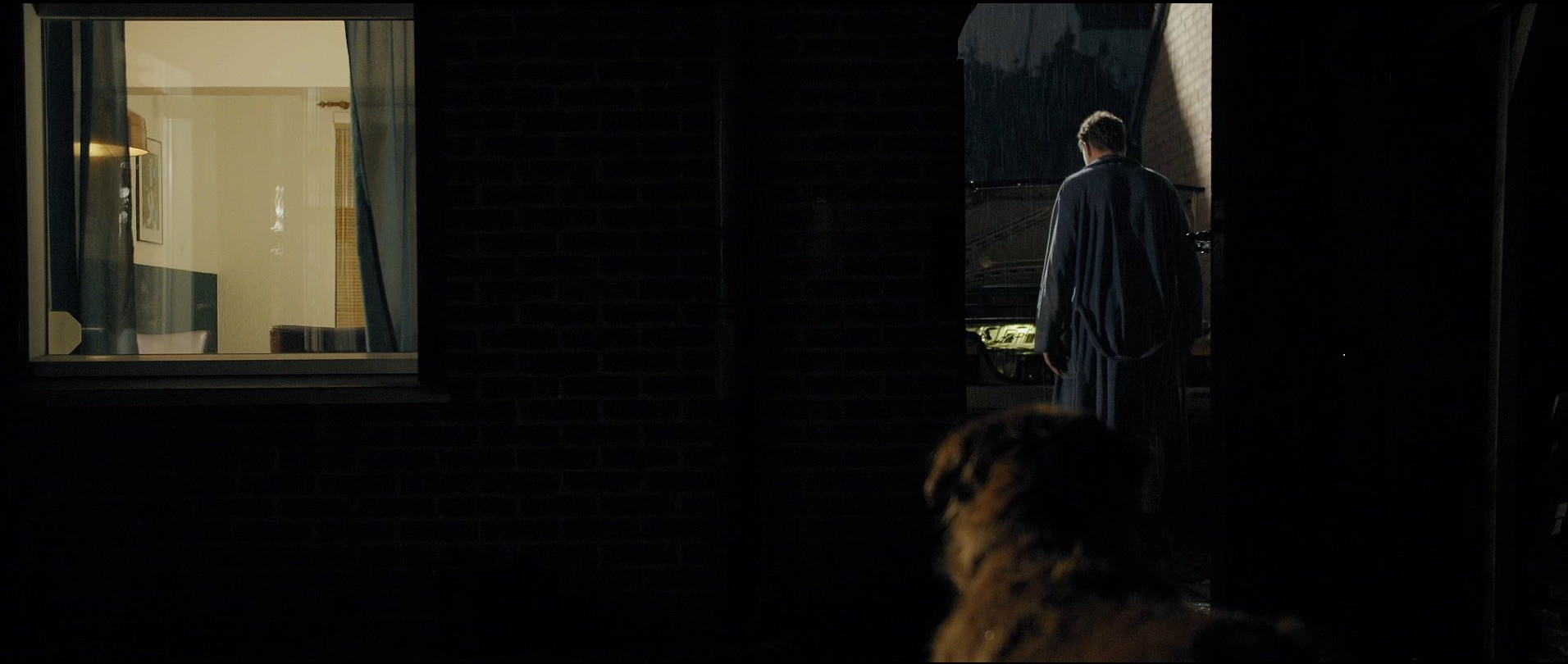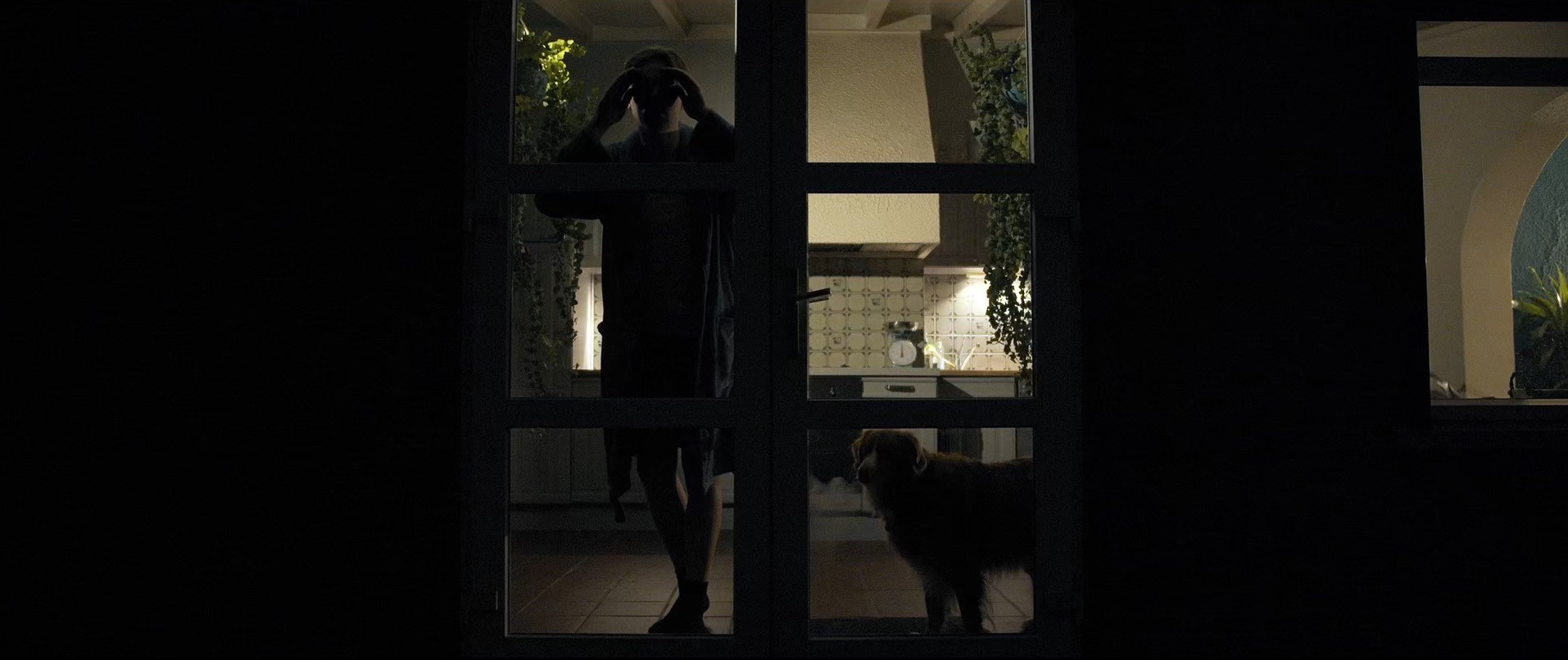
Case Study: In Pieces
The short film will have its avant-première at SHIFT Film Festival 2020.
Geplaatst op 31 augustus 2020Nils Hanssen has been passionate about the medium of theatre and film since he was a child. After having performed in a few plays himself, he was accepted at the Toneelacademie Maastricht in the direction of scenography. In the past years, among others, he has been active as an art director for several short films. He also co-directed the completely improvised medium-length film Grenzeloos (2019). Nils mainly tells deep, personal, suspenseful and sometimes funny stories in which his focus is on pure visual imagery.
"During the making process I learned a lot about myself, I dived deeper into my subconsciousness than any therapy session has ever been able to do."
Dark inspirations
"I got the idea for the film during a very long depression and a mentally unstable time. After having wanted to be a filmmaker for a very long time, this was the first serious idea that came to me. I was 15 years old then. On some website about urban legends I read a story about a mysterious puzzle and this caused me to have sleepless nights for a while. Around this time I was in the very beginning of my depression."
"5 years later, around the age of 20, I was inspired by the movie Enter the Void. The idea from 5 years ago came up again and the thought to make the story richer through the use of flashbacks started developing. I found Gaspar Noe's use of the POV camera so daring and bold that it immediately inspired me to also use this medium in order to literally show the flashbacks through the eyes of the main character. I was also in the darkest period of my depression and my drinking and drug abuse was the highest at this point. I felt the urge to show everyone what I saw every day."
"Another 5 years later I finally started to gain experience in the world of theatre and film. During this period I realized that I had been in a depression for 10 years. I finally faced all the things I've been ignoring all these years. After I had made a theatre performance on this subject, I felt that I was finally ready to start this film. I could finally bundle everything I had collected and made over the years to give this film depth. During the making process I learned a lot about myself, I dived deeper into my subconsciousness than any therapy session has ever been able to do. This has finally allowed me to close my 12 year long chapter of depression."

Valuable tips for a fantastic script
"The first version of the script was written pretty quickly. Like most beginning filmmakers I thought my own script was fantastic and I had the perfect one. After a number of rejections from film funds I started to scratch my head. Guido Franken from CineSud then helped me to get coaching from Tim Rutten and Hans van Hezink from Video Power in Maastricht. They opened my eyes to take a more critical look at my script. I began to question each sentence and why it's in the script and what the purpose and necessity of this sentence was. This gave me a fresh look at the script again."
"Dozens of versions later I had a conversation with Thijs van Dijk. He finally gave me the golden tip: throw your entire script in the trash and rewrite it from your own memory. I started this right away. And I left out everything that didn't matter for the story. For each scene I wrote down the structure for myself, what the beats and the necessity of the scenes were. Then I started all over again. I finally used this script as the shooting script."
Working like Tarantino and a Hip Hopper
"Over the years, I've had a very clear vision of the film. By writing a director's vision and doing a lot of research, I've explored this in depth. Like Tarantino I took everything I liked in other movies and like a hip hop beat sampler I remixed everything. And managed to make it my own."
"With such a strong vision comes a strong urge to protect this vision. But film remains a team sport. One person doesn't make a team. By the time Coen Leuven joined me as director of photography, I had already played the film 1000 times in my head. But it remained important for me to be open to the creativity of my collaborators. A good idea can come from any direction and it would be a shame to ignore good ideas."
"First, Coen and I had a few conversations about what the feel of the film should be. What the difference was between the present and the past and which colors I wanted to bring forward and why. With this foundation we made a shot list together for the cinematic scenes based on the location. It was a ping-pong match of ideas. I can't remember which shots I came up with and which came from Coen's brain. With every choice that was made I always had a few questions in the back of my head. What does this shot tell you? What feeling do I want to create with this shot? What is its contribution to the story?"
"The POV scenes were more freestyle. I had made a shot list for this, but for the final movement, composition and choreography this really had to be done on the set itself, with Sebas Berman, our lead actor who wore the helmet, and Coen who kept a close eye on everything. As these scenes were all filmed with the helmet and the freedom that came with it, everything went much smoother than expected."
"Since I was the writer and producer of the film, I noticed that there was no limit in my freedom to tell this story. The only thing that limited me was budget, location and technology. We only had to change one big scene because we didn't get the location we wanted. It was a big fairground/park scene, but since no amusement park wanted to be associated with a dark movie like this we had to rewrite it to a game hall. At the end of the ride, the game hall worked much better."

Broadening the horizon
"Being an autodidact filmmaker, everything was new to me. I've been on set as an art director and location assistant before, but this is just a small part of the filmmaking process. The internet helped me the most. During the time before the actual shooting started I spent entire days and nights reading online articles, following master classes and learning from YouTube analyses. I followed online masterclasses by Martin Scorsese, David Lynch, Ron Howard, Jodie Foster and Nathalie Portman. During the breaks at work I watched clips of YouTubers who dedicate their channel to everything that had to do with film. And in the evening I fell asleep listening to podcasts and interviews of Quentin Tarantino, Edgar Wright and Christopher Nolan."
"Funding was also a difficult process. You can find a lot online about the creative process but very little about the business side of the film industry. The only thing I could do about it was to undergo everything. CineSud and the guys from Video Power gave me a push in the right direction. This was the most difficult process for me. I knew I had good ideas, but I am a very bad salesman. In the end I could get together a small budget (which, by the way, was a fraction of the intended budget) but I had to deal with it because I HAD to make this film."
"Now for the cast and crew: I knew Sebas Berman, the leading actor, from my year at the Toneel Academie in Maastricht. I was aware that he had an affinity with the themes that were important in my film. Therefore he was the perfect choice for this role. Manouk Pluis the same story. I got to know her through different projects at which we worked together. A quality that appealed to me in her acting is that she was able to explain what was going on inside her character without words. This was very important for this film."
"Also the crew was a no-brainer. With Yorn Heijnen as my line producer who took care of all the practical matters, I had the rest worked out quickly. Because the budget was low I got support from my crew who believed in me and did everything as a favor. They were mainly the people with whom I had usually shared the set before and a couple of newcomers for whom it was the first film production, so I was very grateful for their support."

'Yes, we can!'
"Honestly, everything that could go wrong went wrong. The shot list was too long, problems with the delivery of the main prop, rain at the time we had to do the outside shoots, a location that had forgotten we were going to shoot. You name it and we had to deal with it. Still, the ambiance on the set was great! For me it was one of the most important things during the shooting days to give everyone the space and to give everyone the feeling that they were very much appreciated. This created a 'Yes, we can' spirit, and everyone went the extra mile to get everything on film."
"Working with the actors on the set went very smoothly. Even though we didn't have much rehearsal time we talked a lot about the characters. And we were on the same page when we arrived on set. It was a matter of communication to get into these emotions and needs for the character for every scene just before the cameras started spinning. Because of the mutual trust, it was easy to free up the actors in their play. On set, it felt like a safe environment where we were open to each other's suggestions, and where the actors had enough space to dive deeper into their character."
"Felice Smith was our first AD and shepard in this chaos. The decisions that were made were clear and straightforward. If the long shot list was not achievable, Coen came up with the solution. If we got stuck for a moment, Ivo Bemelmans got the time to make extra sound recordings. Nevertheless, it was a long run, the days were tough. But it was worth it!"
Post-production powers
"Ayşe Remmler gave life to the film in the editing. No idea how she does it. To my great surprise, a 13-page script turned out to be a 35-minute film. Frightened by the length we went back to edit it to a film of less than 20 minutes. But we noticed that the shorter length did not do justice to the story. The script and the story are put together like a puzzle. This made it difficult to cut the film all the way back without losing any pieces of the puzzle. In the end we had to lengthen the film again so that everything started to make sense again and the viewer got the information he needed to understand the story."
"Jurriaan van Dijck, my sound editor/mixer, made this picture even more complete. He intuitively managed to give the scenes even more suspense in the field of sound design. How he gets it done is still a mystery to me. But he opened my eyes to how important sound is for a movie."
"I did most of the research on the soundtrack. I had specific plans for it. I worked together with a hiphop/techno producer named Joel Weiler. Since this was his first film score we had a lot of conversations about what it should be. I wasn't very pleased with the first draft he sent me. Luckily, after some clear communication, he made a second draft that precisely set the tone for the story. Full of musical illusions and psychological tricks. We used this version right away."
"The grading was an essential element for this film. The grading does not only create the atmosphere and tone of the film, but also tells us where we are in the story. As mentioned before, the story takes place in several timelines. To make it less confusing, it was very important to make the grading so different that it was immediately visible to the viewer where exactly you are in time. The present scenes went as easy as that. The flashback scenes were a bit more difficult. Because of the unique perspective, we went into an extreme in the grading. This was a big challenge."
"Because of Covid-19, now distribution is ticking over a bit. I'm using this time to make a game plan since distribution is also new to me."

From a dream to a plan
"My tip for filmmakers in general is to stay open-minded. Film is a team effort, so bundle the creativity of yourself and your collaborators. For first time directors: There are plenty of reasons not to start. The reasons why you should not begin will be echoing in your own mind and make it easier to stay in your comfort zone. Only the regret why you never did it, gets bigger with time. So just do it! A dream with a deadline is a goal, a goal in a few steps is a plan."
"Be stubborn enough to hold on to your vision. Be open to suggestions and criticism. Listen to those suggestions and criticisms, find out what makes sense for yourself. And be strong enough to carry on with your vision. You won't find out if you don't start!"

In Pieces
Made in Limburg
September 12, 18.00-19.30, ECI Roermond.
(c) All visual material is used with the filmmaker's permission.